Nestled in the Southwestern part of South Africa, the cape rain frog, with its charming appearances and remarkable characters, has earned its place in the heart of wildlife photographers and researchers. It was the first African frog species to be scientifically described by Carl Linnaeus in 1758, under the name of Rana gibbosa.
The cape rain frogs are the largest and most common rain frog in the world. These frogs are known as rain frogs as the local believe that this genus of frogs brings rain. In this article, we will delve into the world of the frog species and explore its characteristics, behaviour, habitat and many more facts.

Table of Contents
The Cape Rain Frog- In a Glimpse:
| Common Name: | Cape Rain Frog |
| Scientific Name: | Breviceps gibbosus |
| Other Names: | short-head frog, headless frog, hunched toad, Linnaeus’s rain frog, South African rain frog. |
| Group Name: | Army, Colony |
| Adult Weight: | 13 grams |
| Adult Length: | 3.5-4.5 cm |
| Color: | Brown to Olive Green |
| Character: | Diurnal, Terrestrial Breeders |
| Distinct Features: | Can’t Swim, will drown into water |
| Distribution: | Cape Town, Southern Part of South Africa |
| Habitat: | Agricultural land, garden, residential places, fynbos biome. |
| Lives in: | Burrows |
| Breeding Season: | April- November |
| Litter Size: | 20-22 |
| Diets: | Worms, termites and small insects. |
| Predators: | Eagles, lizards, snakes, bush pigs and domestic pets |
| Threats: | Habitat Loss, Agricultural Expansion, Road Construction and Use of Herbicides and Pesticides etc. |
| Life Span: | 4-15 years |
| IUCN Status: | Near Threatened |
| If a Good Pet? | No |
| Poisonous? | No |
8 Fascinating Facts About The Cape Rain Frog:
Scientific Classification:
| Domain: | Eukaryota |
| Kingdom: | Animalia |
| Phylum: | Chordata |
| Class: | Amphibia |
| Order: | Anura |
| Family: | Brevicipitidae |
| Genus: | Breviceps |
| Species: | Breviceps gibbosus |
Relatives:
| Species | Distribution | IUCN Status |
| The Black Rain Frog | South Africa | Least Concern |
| Rose’s Rain Frog | South Africa | Least Concern |
| Mountain Rain Frog | South Africa | Least Concern |
| Strawberry Rain Frog | South Africa | Least Concern |
Physical Characteristics:

The rain frogs have rounded bodies with short arms which allows them to store water during dry spells. The species shows sexual dimorphism as the females are usually larger compared to the males. The frogs are 3.5-4.5 cm in length and about 13 grams in weight. Their legs are short and their body is stout, which makes the frog unsuitable for jumping like other amphibians.
The colour of the frog varies from brown to olive-green with a white dotted pattern on its belly. Due to the colour combination, cape rain frogs exhibit camouflage amidst the greeneries. They have bulging eyes and no webbing between their toes. The African rain frogs are also known for the narrow mouth and head they possess.
Distribution and Habitats:
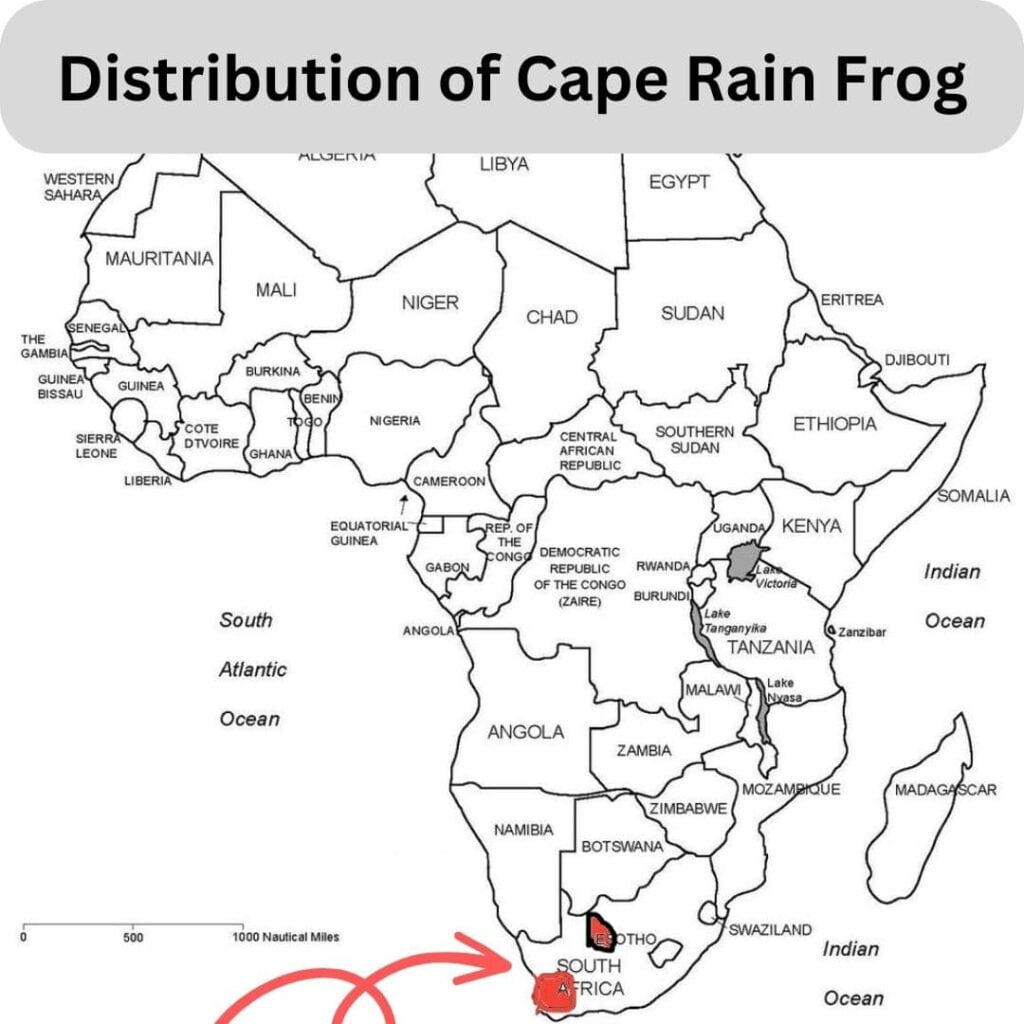
The cape rain frogs are endemic to the southwestern part of South Africa ranging from Cape Town to Citrusdal where annual precipitation of 300–600 mm. The frog prefers Mediterranean-type shrubby vegetation, which is also known as fynbos and renosterveld.
The rain frogs usually rest in their burrows which are created by burrowing backwards while simultaneously scooping sand to cover themselves. They are usually found in farms, pastureland, suburban gardens, urban areas, rural agricultural filed and residential gardens. Thus the species is vulnerable to herbicide poisons and domestic pets.
Behaviour:
Cape rain frogs survive the long, dry, summer by resting underground the burrows which are usually 10 cm deep. The frog usually emerges just before rain as the name suggests. To maintain the moisture of the body, the species prefers misty and humid conditions as mist and humidity provide the necessary moisture to them.
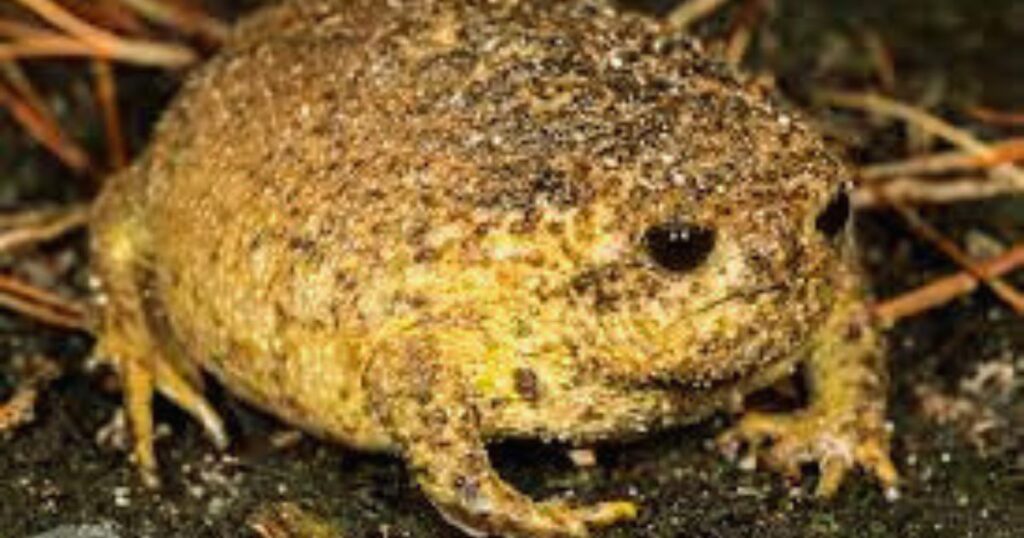
The rain frogs have thick and muscular legs which allows them to burrow the shelter. Unlike other frog species, this species doesn’t need water to breed as they are terrestrial breeders. Surprisingly, this amphibian cannot swim and will drown in water.
Ecological Impact:
The frog species also help in agriculture by aerating soil while digging their burrows. They also feed on worms and insects which are harmful to agriculture. But during the agricultural process, rain frogs and their habitats are harmed as they usually live underground. The species can detect drops in barometric pressure and forecast rains.
Defence Mechanism:
The cape rain frogs are locally called blaasoppie as they increase their apparent size by swallowing air when the frog is threatened and emitting a very unique calling sound or war cry.
Are Cape Rain Frogs poisonous?
These frogs are not poisonous at all. The frogs have a small lump on their skin that looks scary but they are not poisonous at all. The frog species can be a very good choice if you want to keep them as pets.
Reproduction:
The cape rain frogs have a special gland to secrete glue-like substances used for amplexus. The special gland is located on the pectoral region of male frogs and on the dorsum of female frogs. The females have a higher concentration of adhesive glands than the males. These glands help in sticking to one another during sexual reproduction.
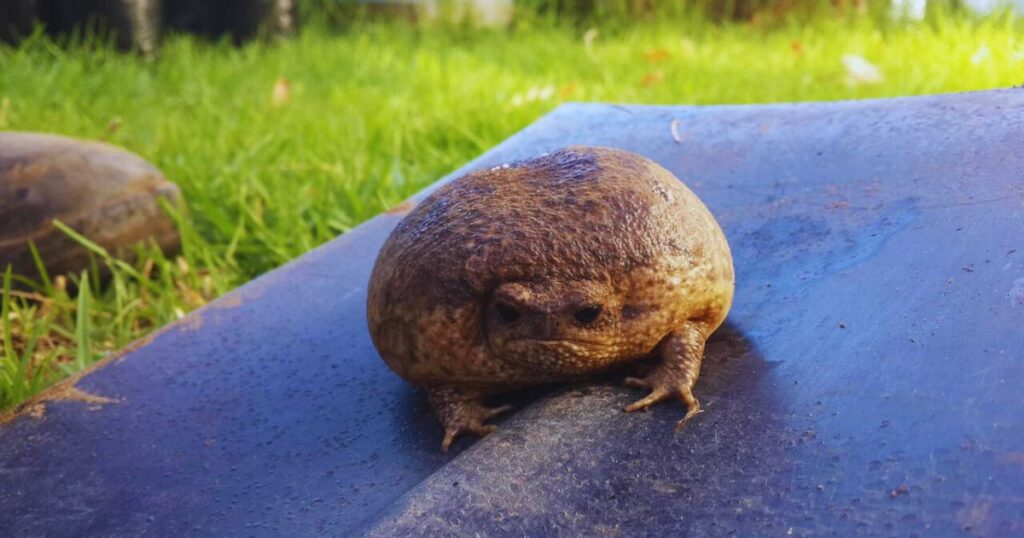
The breeding season usually starts with the first rain of April and continues till November. During mating season, the males create a squeaking sound to attract females. The squeaking sound occurs day and night in wet weather. The calling peaks in late August to October, suggesting warmer temperatures.
During the breeding season, the males squeak from beneath the vegetation or the burrows so the female can identify them. The female secretes sticky liquid glues that hold the male and female together during sexual reproduction.
The fertilization takes place inside the burrows which the male dug. While the female lays eggs, the male protects the nest from any kind of possible danger. The female lays approximately 22 fertile eggs. They also lay jelly capsule-type substance which provides sufficient moisture to develop the froglets. Similar to desert rain frogs, cape rain frogs also don’t undergo the tadpole stage to become young froglets.
Lifespan:
Usually, Cape rain frogs live up to 4-15 years old.
Diets:
As the frog species usually live in gardens, pine plantations and agricultural lands, they usually feed on worms, termites and small insects.
Predators:
The tiny frog species has many predators such as eagles, lizards, snakes, bush pigs and domestic pets often hunt the frog to consume.
Threats:
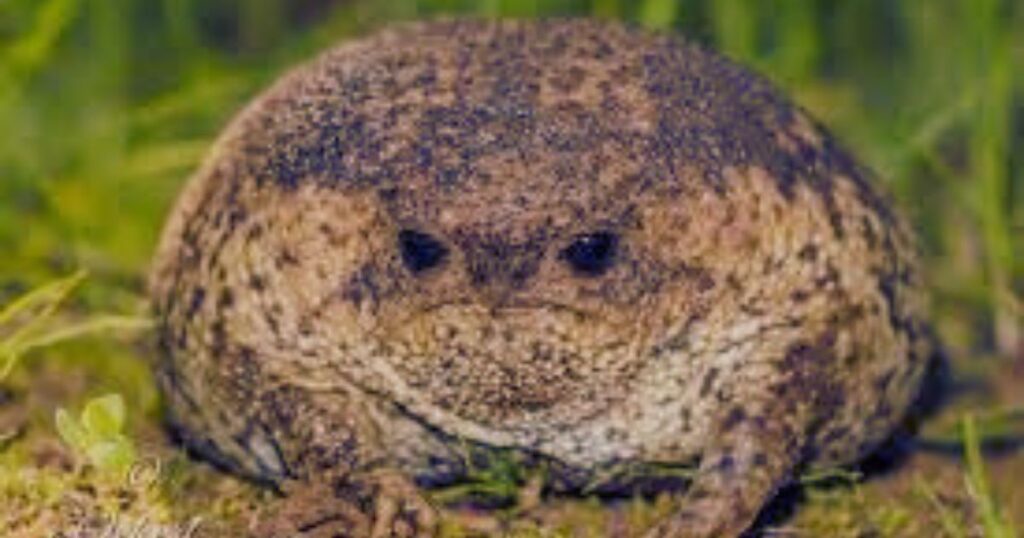
The main threat to cape rain frogs is habitat loss due to the destruction of fynbos biome. The increase of human settlement, agriculture, expansion of roads and over usage of herbicide poisons causes the threat to its survival. Due to rapid industrialization in that region, the fynbos biome suffers and it results in diminishing and fragmenting the frog population.
Conservation Efforts:
There are no restoration projects for the species going on but in some parks which include Cape Peninsula National Park, Helderberg Nature Reserve and Paarl Mountain Nature Reserve, the captive breeding and other conservation processes are going on.
Although at ground level, there are few steps were taken, such as the prevention of paving ground in residential areas, prevention of converting open spaces for urbanization and prevention of poisonous pesticides and herbicides in gardens to safeguard the small amphibians.
Conservation Status:
The cape rain frogs are listed as “Near Threatened” in the IUCN Red List of Threatened Species. The species is not listed in CITES.
Cape Rain Frogs As a Pet:
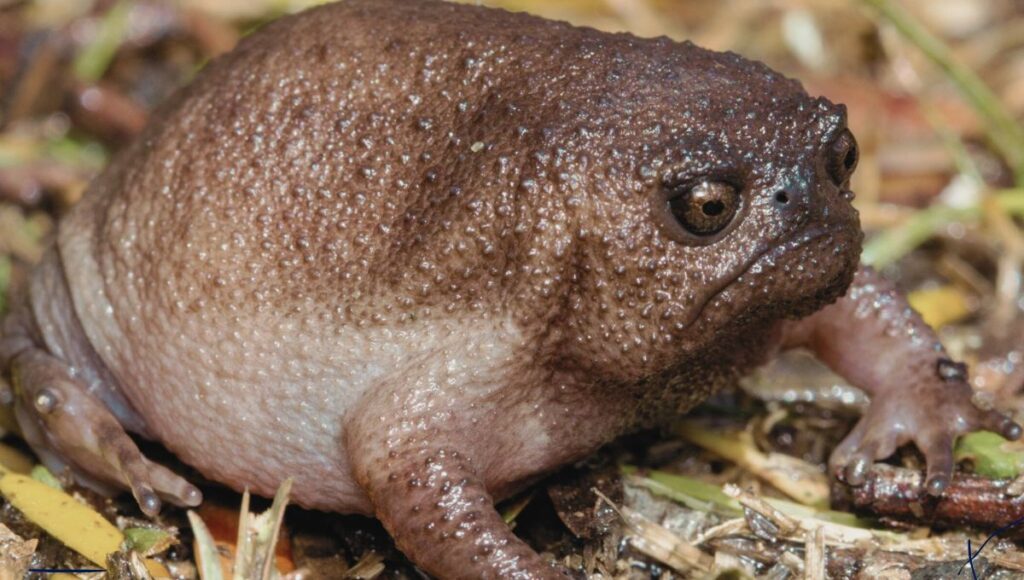
The frogs are usually very hard to find in the pet market because they are near threatened in the IUCN Red List of Threatened Species. They have similar requirements and care to desert rain frogs but Cape rain frogs need humid environments with regular misting.
The rain frogs could be less active and social as they spend most of their day in the burrow. The frogs are neither vocal (except during breeding season) nor prefer to be handled by humans. Their skins are susceptible and frequently touching them can cause stress or irritation to the frogs. Hence, these frogs are not best suited for beginners or the children.
If you are interested in keeping a Cape rain frog as a pet, you must research their requirements and care before buying. If necessary, you can contact a veterinary surgeon who is a specialist in amphibians for more details.
How do you Buy a Cape Rain Frog?
The frogs are victims of poaching and trafficking illegally. Hence it is advised to buy these frogs from reputed breeders. Ensure that your pet was born and raised in captivity and ask for its proof of origin and health certificate from the breeder.
The frogs are also available on online websites but before buying them check the reviews, policy, and other important information. As wild Cape rain frogs are often exported illegally from South Africa without a proper permit, you should check the laws of your country about that specific pet. Also, verify the credibility and reputation of the seller before buying to prevent any kind of legal trouble afterwards.
Requirements and Care:
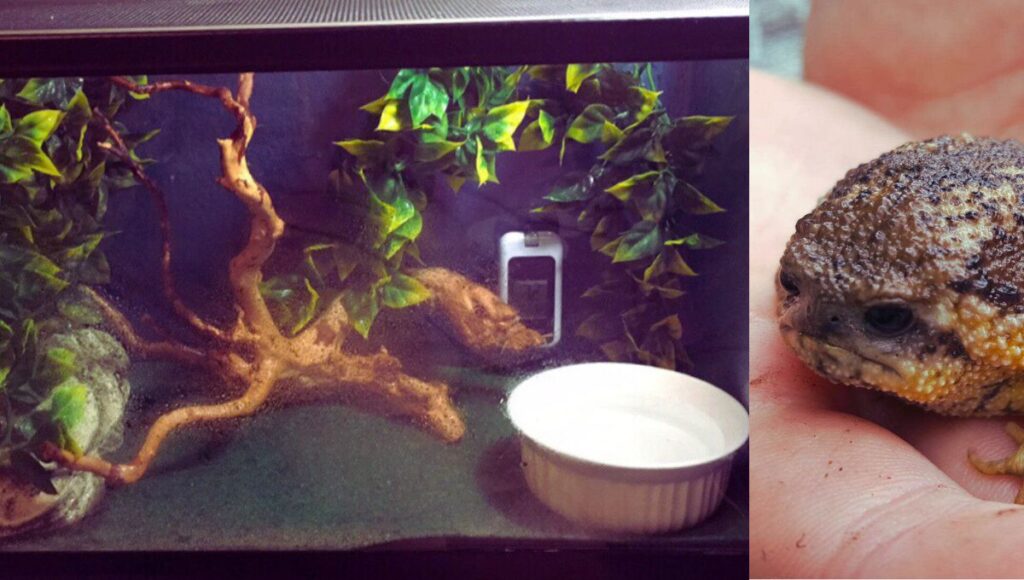
Tank and Substrate:
A 10-gallon terrarium tank can be the home of one or two rain frogs. The tank should be at least 4 inches deep and filled with moist sand or a mixture of sand and coconut fibre. The enclosure should have a lid, proper ventilation, and a hiding place (such as artificial plants).
A shallow water dish is also needed for drinking and bathing and must be cleaned daily. No matter which enclosure you choose for the frog, the enclosure’s ecosystem must be similar to their natural habitat. Natural substrates are best and cheap, but if you are unable to find them you can also use artificial substrates, which is equally good.
Temperature and Humidity:
The rain frogs require a warm and humid environment to thrive. In the daytime, 60-75 degrees Fahrenheit temperature is required whereas at night the temperature should be a little cooler. You can use a heat lamp or heat mat to raise the temperature of the enclosure but avoid overheating them.
As Cape rain frogs prefer a humid environment, you need to maintain a humidity level of 70-80%. You can use a fogger or you can sprinkle dechlorinated water in the enclosure several times a day to maintain the humidity level. Use a hygrometer to monitor the humidity level of the enclosure.
Diets:
The frogs are insectivorous and feed on worms, termites, and small insects. The insects should be gut-loaded with nutritious food and coated and dusted with calcium and vitamin supplements that are necessary for the frog. You can feed them every other day and the amount of food required completely depends on their size, gender, health condition, and appetite level. Uneaten foods should be removed from the enclosure daily to prevent bacterial growth.
Lighting:
The frogs need 12 hours of light circle to maintain their life cycle. You can use low-wattage fluorescent or UVA/UVB LED bulbs to light the enclosure without much heating.
Cleaning:
The enclosure should be cleaned daily to remove waste food, dead insects, or mouldy substrate to prevent bacterial growth. The water dish is also cleaned and refilled regularly.
You need to deep-clean the entire tank at least once a month with dechlorinated water using a mild disinfectant and rinsing thoroughly. The substrate should also be changed every 12 weeks or earlier if it smells bad.
Handling:
Cape rain frogs don’t like being handled by humans. If you touch them unnecessarily, it’ll cause stress to them. Due to their skittish nature, they become afraid easily. Hence be careful while handling those frogs and keep kids away from them.
Also, the skin of cape rain frogs is absorbent. Hence wash your hands properly and wear gloves before touching them. Any chemicals, pesticides, or rodenticides can harm those frogs. Thus use substrates, plants, or other elements inside the enclosure that are safe and eco-friendly.
Frequently Asked Questions (FAQs):
Can you have rain frogs as pets?
You may have rain frogs as pets as they are not poisonous. But for that, you need to provide it with a suitable environment, appropriate temperature, humidity and timely food. But you remember you cannot expect attachment from your frog as the frogs are wild.
How long do rain frogs live as pets?
The rain frogs usually live up to 4-15 years. There are many types of rain frogs as desert rain frogs, cape rain frogs, black rain frogs etc. All of these frogs live between 4 and 15 years.
What is the lowest maintenance frog?
There is no concrete answer to this question but frog species like the Pacman frog, Tomato frog, Fire-Belly toad, White’s Tree frog, Waxy Monkey frog, Red Eyed Tree frog, and Amazon Milk frog are the lowest maintenance frogs with easy-to-take care.
Are rain frogs safe?
Yes, rain frogs are safe. The frogs are non-poisonous and sometimes they are eco-friendly as well. Cape rain frogs help in agriculture by aerating soil while digging burrows. The frogs don’t harm human or domestic pets but humans and pets often harm the tiny frog species.
What do common rain frogs eat?
Rain frogs are usually insectivorous. Small insects like beetles, moths, Termites etc are the main food of rain frogs. Rain frogs meet the moisture requirements by consuming these insects.
Can African rain frogs jump?
The rain frog has a bulky body with short legs which doesn’t allow them to jump like other frog species. They can walk at a speed of 8-10 km/h.
Also Read:
Smoky Jungle Frog: Everything About the Frog in Only 2 Minutes
Are Pixie Frogs (African Bullfrogs) Good Pets? Everything You Should Know Before Purchasing